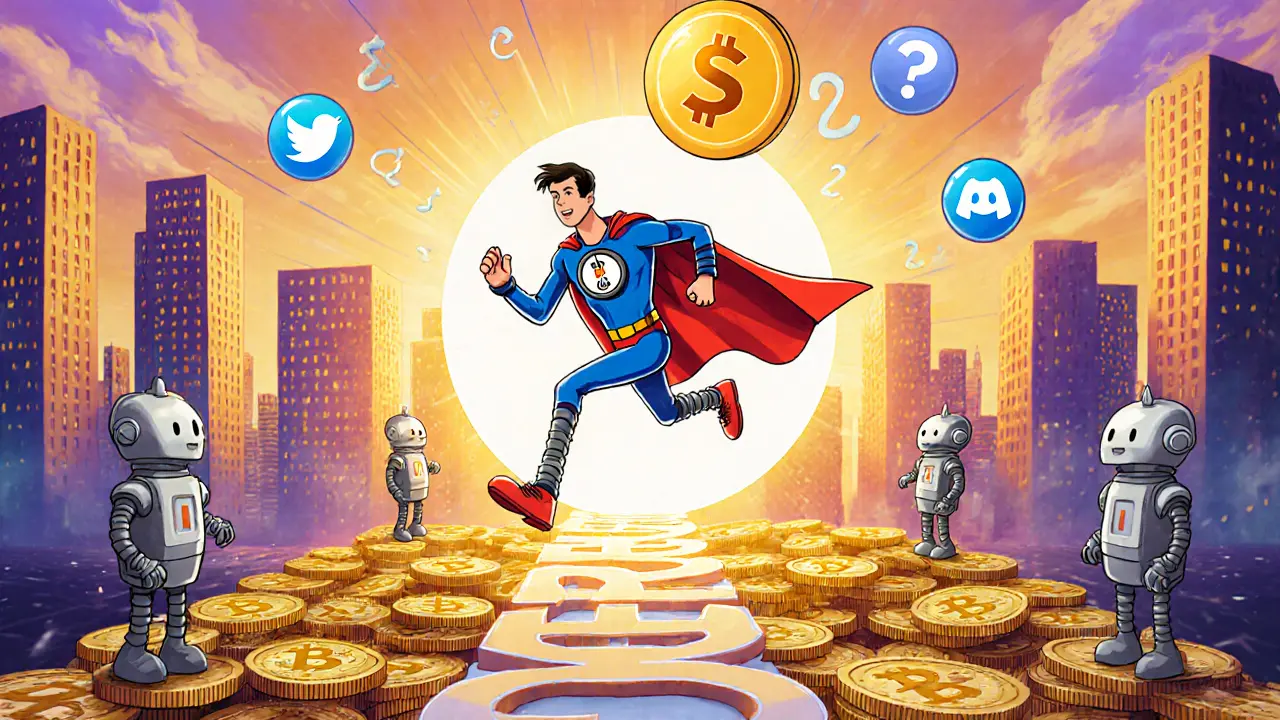Crypto Airdrop 2025: How to Find Legit Drops and Avoid Scams
When you hear crypto airdrop, a free distribution of cryptocurrency tokens to wallet holders, often to grow a project’s user base. Also known as crypto giveaways, these are one of the few ways regular people can get exposure to new blockchain projects without spending money. But not all airdrops are real. In 2025, over 70% of advertised drops are either scams, dead projects, or traps designed to steal your private keys. The good ones? They’re still out there—if you know how to spot them.
Legit airdrop eligibility, the specific requirements you must meet to qualify for a free token distribution, such as holding a certain coin, following social accounts, or completing tasks. Also known as qualification criteria, it’s what separates real opportunities from noise. usually involve simple actions: holding a token like ETH or SOL in your wallet, joining a Discord, or using a specific dApp. Projects like NBOX and STBL Protocol have run real airdrops in 2024 and 2025, rewarding early adopters who actually used their platforms—not just signed up. On the flip side, dead tokens like CADINU or MOLK sometimes fake airdrops to create false hype. Always check if the project has active development, real team members, and a working product. If the website looks like it was made in 2017 and the Twitter account has 50 followers, walk away.
Don’t give out your seed phrase. No legit blockchain airdrop, a free token distribution on a public ledger, typically tied to wallet addresses and smart contracts. Also known as crypto token giveaway, it’s a standard practice in Web3 to incentivize adoption. will ever ask for it. Scammers will send fake links that look like official portals, asking you to connect your wallet. Once you approve, they drain it. Use a separate wallet for airdrops—never your main one. Tools like MetaMask with a dedicated address for drops can save you from disaster. Also, track drops through trusted sources like Innterim Crypto Bridge, where we verify each listing before publishing. If a drop promises 10,000 tokens for clicking a link, it’s a lie. Real airdrops reward participation, not luck.
Some airdrops in 2025 are tied to new protocols like STBL, which rewards users who interact with its yield-bearing stablecoin system. Others, like the NBOX NFT giveaway, require you to play a game or complete challenges. These aren’t just free money—they’re ways to test the project’s real utility. The best airdrops give you a reason to stick around after the tokens arrive. If the project has no roadmap, no code updates, and no community, the tokens will be worthless. That’s why we only list drops with clear use cases, active teams, and transparent rules.
You’ll find real airdrop guides, verified eligibility lists, and scam warnings below. No fluff. No hype. Just what’s working in 2025—and what to avoid at all costs.
The Step Hero airdrop offers 2,980 $HERO tokens worth around $4,800 in 2025. Learn how to qualify, avoid scams, and whether it's worth your time in today's crowded crypto airdrop landscape.
No ECIO airdrop exists on CoinMarketCap as of November 2025. Learn how to spot fake crypto airdrops, why ECIO is likely a scam, and where to find real opportunities in 2025.
As of 2025, there is no legitimate CHIHUA airdrop. The CHIHUA token has zero supply, no trading volume, and no official project activity. Beware of scams using similar names like HUAHUA. Don't send crypto to claim fake tokens.
The Impossible Finance x CoinMarketCap airdrop distributed $20,000 in IF tokens to 2,000 winners. Learn how it worked, why it wasn’t about free cash, and what it meant for future IDO access.
No official RACA × Cambridge airdrop exists as of December 2025. Learn what RACA actually is, how real airdrops work, and how to avoid scams hiding behind fake Cambridge partnerships.




